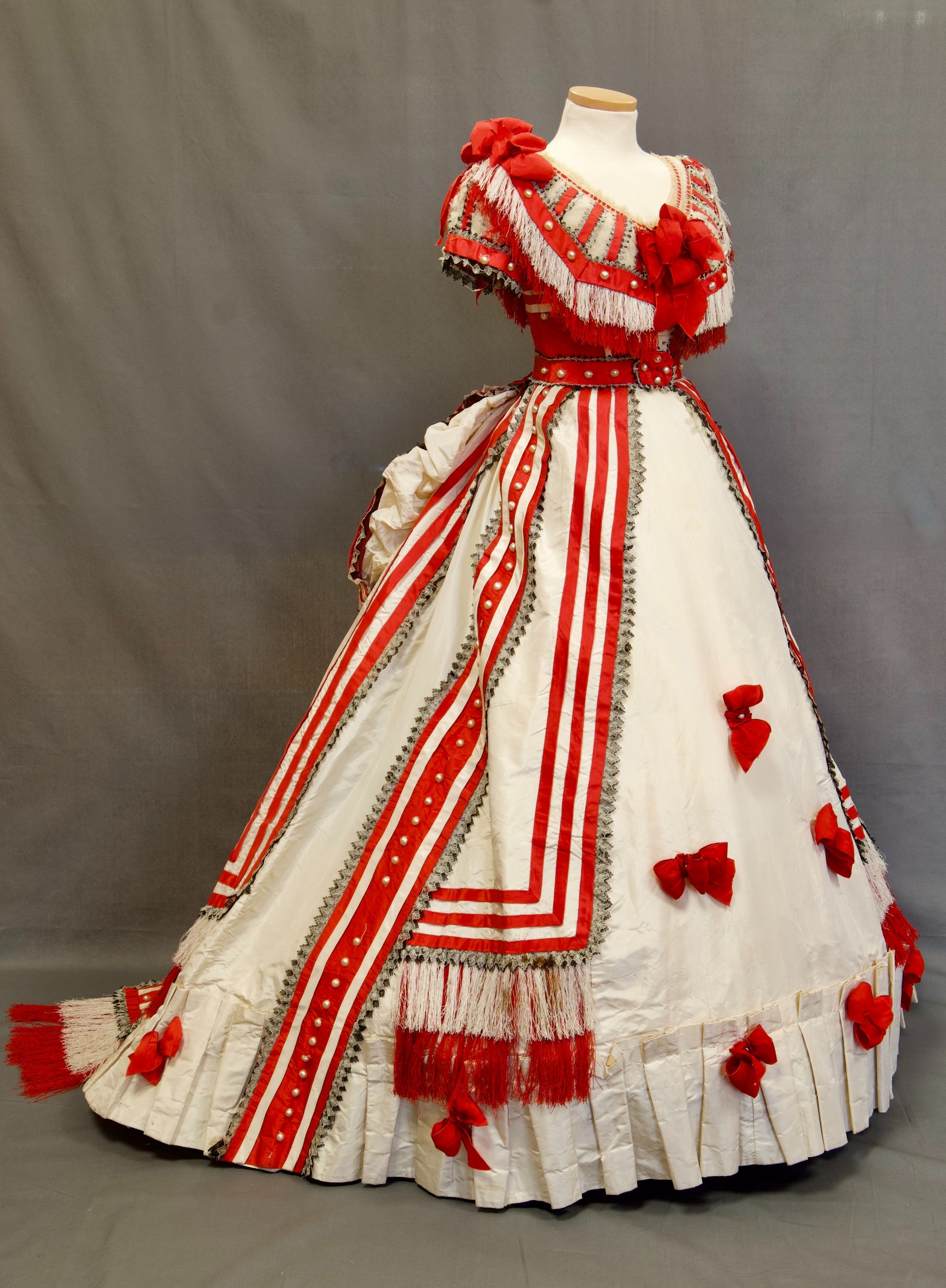Watch a 2023 filmed tour of the popular exhibition by curator Marie Schlag with help from volunteer Cathie McGowan!
Mark Twain’s moniker for this era, “The Gilded Age,” is typified by excess. The upper classes of society gained significant wealth, and rapidly changing cultural norms were beginning, bringing about drastic changes in clothing styles.
The exhibit features period clothing such as gowns, outerwear, accessories, and more from Cohasset Historical Society’s Costume and Textile Collection, showcasing elaborate construction, lavish fabrics, color, and trimmings.
What is the Gilded Age?
The period from 1870 to 1900 takes its name from Mark Twain’s 1873 novel The Gilded Age: A Tale of Today, which satirizes the characters' greedy quest for wealth and respectability. Major issues, such as political and business corruption, poor working conditions, rapid population growth, housing shortages, corporate monopolization, and the continued marginalization of women and minorities, were shrouded in a thin gilding of upper-class economic prosperity.
The gap between the haves and have-nots was the widest in American history. The captains of industry, also known as "robber barons,” like the Rockefellers and the Vanderbilts, accumulated wealth through the expansion of the railroad, oil, steel, mining, and banking industries, often employing underhanded tactics such as union busting, fraud, political bribery, and violence. While the wealthy elites built mansions on New York City’s illustrious Fifth Avenue and vast country estates in Newport and Oyster Bay, working-class people lived in dilapidated city tenement buildings, all family members sharing one room.
While the Gilded Age was not as magnificent as the name suggests, some positive progress was made, including the rise of the women's suffrage movement, investigative journalism, and labor unions. American art flourished under great painters such as James McNeil Whistler and John Singer Sargent, celebrated American writers such as Mark Twain and Louisa May Alcott, and influential journalists like Ida B. Wells and Nellie Bly shaped the voice of the era.
Fashion in the Gilded Age
Excess, Excess, Excess!
Ostentation was the primary fashion guideline for the wealthy from 1870 to 1900. Upper-class women commissioned lavish gowns from designers and dressmakers to show off their elevated economic and social status. While the country was changing rapidly around them, their silhouettes also were constantly evolving. This period was the beginning of the rapidly changing fashion cycle, from wide hooped skirts to the bustle to the slim princess cut and back to the bustle again.
The adage “less is more” did not apply to the Gilded Age. Applied decoration (called passementerie) covered dresses in many forms: trims, ribbons, beading, sequins, braiding, ruffles, flounces, shirring, ruching, bows, lace, and drapery. The prevailing textiles of the day were luxurious velvets, brocades, and fine silks in rich, dark colors. Technological advancements in automated machinery and synthetic dyes led to the widespread use of passementerie and boldly colored textiles
In the lives of upper-class women, fashion was an essential part of their everyday life, governed by strict rules and rituals of society. There were different dress styles for different occasions and times of the day. Morning, afternoon, and evening dresses, ball gowns, walking dresses, riding habits, and tea gowns, to name a few. A wealthy woman might change her clothing up to five times a day. Dressmakers often sold dresses as one skirt and two bodices, a long sleeve for the day and a short sleeve for the evening so that the wearer could get the most use out of her new purchase.
The garments in this exhibition belonged to upper- and middle-class women. Although the silhouette was essentially the same across classes, there was significantly less variety of textiles and trimmings available to women without financial means. While wealthy women would have had dozens of dresses in their closets, working women likely owned one or two everyday work dresses and one finer dress for formal occasions.



